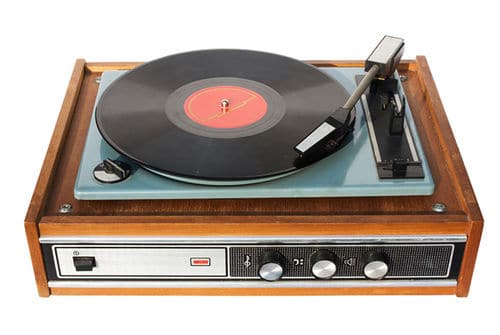First the Twinkie rears its sugary self. Now record albums are seeing a “vinyl revival.” Is the rebirth of the IBM Selectric typewriter next?
In Britain, vinyl sales ($3.02 million) – those petroleum-based discs that you hold gingerly by the edges – eclipsed digital music downloads ($2.6 million) for week 48 of this year.
The news came from Britain’s Entertainment Retailers Association, suggesting the surge could be due to the Christmas shopping season and a growing number of British retailers making shelf space for vinyl.
“This is yet further evidence of the ability of music fans to surprise us all,” ERA chief Kim Bayley said in a statement, which was reported by the British newspaper, The Independent.
“Few would have predicted that an album format, first invented in 1948 and based on stamping a groove into a piece of plastic, would now be outselling it in 2016,” the Independent reported.
Even Amazon.com has gotten in on the act, announcing the launch of Amazon Vinyl Lounge for the purists.
Is this trend taking the United States by storm? Don’t dust off the antique turntable just yet.
“We love that people are consuming music in all these different ways,” said Joshua Friedlander, senior vice president for strategic data analysis at the Recording Industry Association of America. But he added that, “t’s important to temper the enthusiasm by saying this (vinyl sales) is just a single digit slice of the market.”
Vinyl sales have been growing by 10 percent a year, but they still occupy a niche. For the first half of 2016, vinyl sales were $207 million, or about 6 percent of the $3.4 billion in revenue for the U.S. recording music industry. Digital downloads for singles and albums during the same period were more than $1 billion. Streaming accounted for nearly half the revenue during the first half of this year.
Like many other businesses – newspapers, film, retail stores, travel, television – the economics of recording industry has been transformed by the digital age. At its peak in 1999-2000, the U.S. record industry earned just shy of $15 billion. It’s about half that now, although the first half of 2016 saw total sales tick upward by 8 percent, according to the RIAA.
This vinyl renaissance was helped by Record Store Day, which began in 2008 as a way to put the spotlight on independent record stores. There’s also nostalgia.
Fortune magazine reported earlier this year that LP (as in, long playing) record albums were in comeback mode, hitting a 28-year high. The upward arc comes not only in spite of vinyl’s alleged inferior quality compared to digital, but because of it.
“Albums were old school, filled with hisses and pops that digital music had erased,” Fortune reported in April. “But those flaws added a depth and warmth to the music that even people who once owned extensive album collections had forgotten after years of listening to digital music.”
forgotten after years of listening to digital music.”






